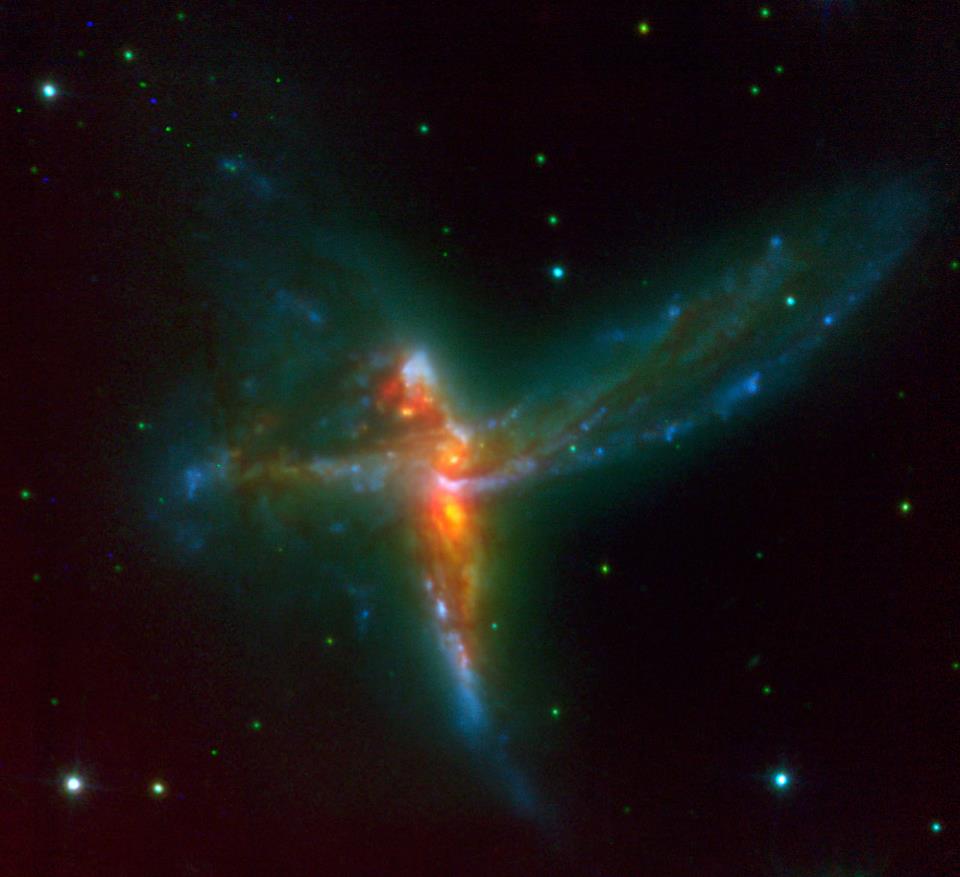

As Human beings, we have the tendency to see patterns in ‘other-worldly’ things, like the Cydonia “face” on Mars, the virgin Mary’s face in a burnt piece of toast or simply seeing shapes and faces in the billowing clouds on Earth. This phenomenon is known as Pareidolia and its a psychological condition that may have been ingrained in us through evolution. At least, that’s Carl Sagan’s hypothesis. With that said, one of the most prevalent forms of pareidolia is exercised when viewing deep-space galaxies and stellar nebulae. All sorts of strange images pop up in some of them, ranging from anything concerning the human eye to flowers and animals. This particular one happens to be one of the most detailed and brilliantly colored objects in the observable universe.
This galaxy, which is known simply as ‘The Bird’ (more formally known as ESO 593-IG 008 or IRAS 19115-2124), lies some 650 million light-years from Earth in the Sagittarius constellation. This cosmic critter was created by a chance merger of not two, but three separate galaxies. Two of which, were massive spiral galaxies while the third was an irregular dwarf-galaxy like one of our own, the Large Magellanic Cloud, which is about 158,200 light-years from Earth.
In addition to being eerily similar to a humming bird (at least in my opinion), ESO 593-IG 008 is also quite large. The distance separating one wingtip from the opposite one is a stunning 100,000 light-years across, making it almost the same distance of the Milky Way galaxy. One more interesting note, is that the ‘head’ of the bird (which is the irregular dwarf galaxy) and various other parts like the heart and body (from the spiral galaxies) are actually traveling away from one another at an exceptional speed of about 250 miles (400 km) per second! It is this expansion of the separate parts that are responsible for the tidal tails and the wings that make this image so Earth-like.
Furthermore, the same head is an area undergoing intense periods of star formation, estimated to be forming about 200 solar masses of materials each year!
You can see a larger version here:
“Cosmic Bird? Triple Cosmic Collision Of Galaxies Stuns Astronomers:”
http://
Image Credit: ESO, Henri Boffin. (CC BY 3.0)